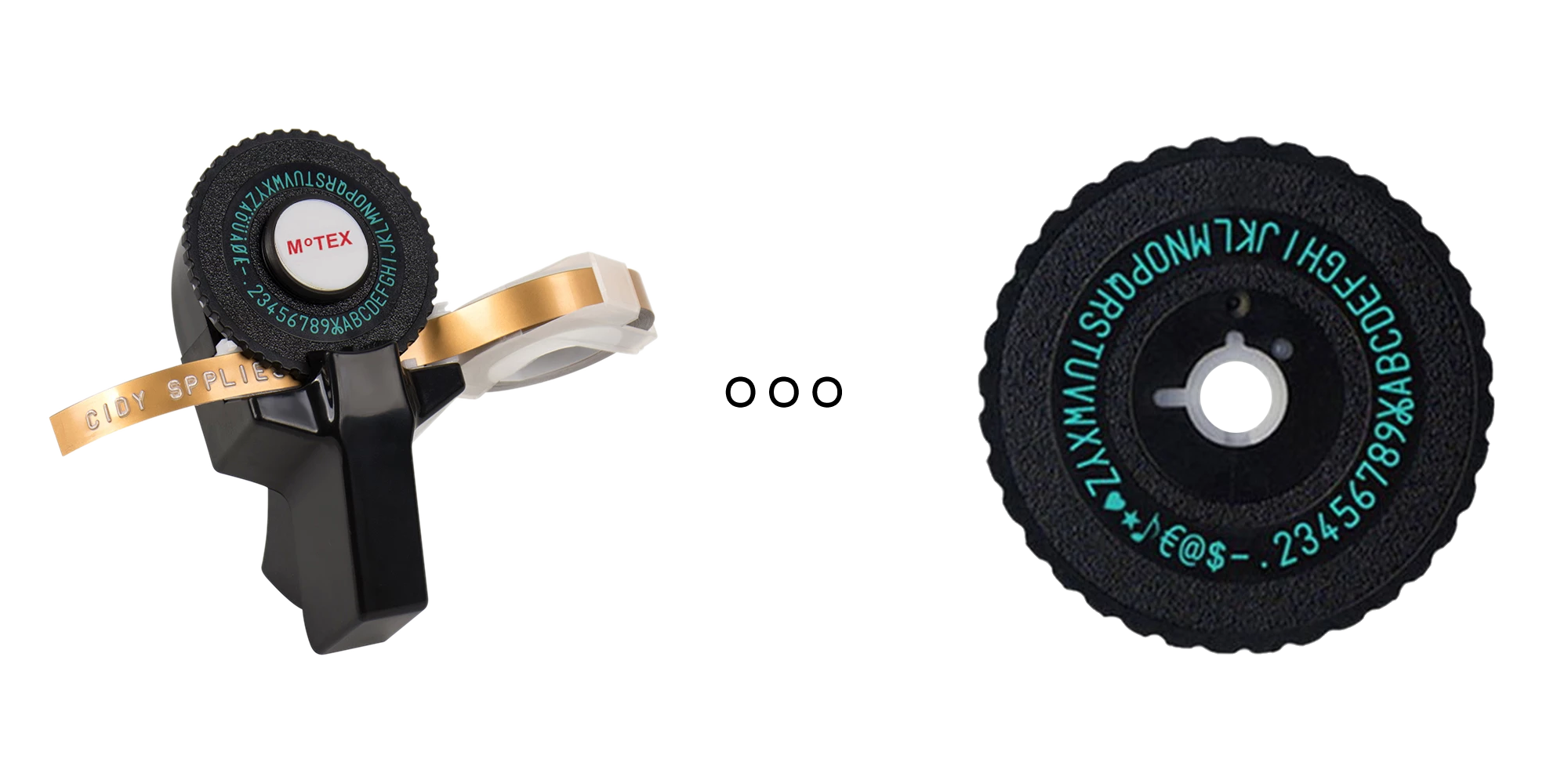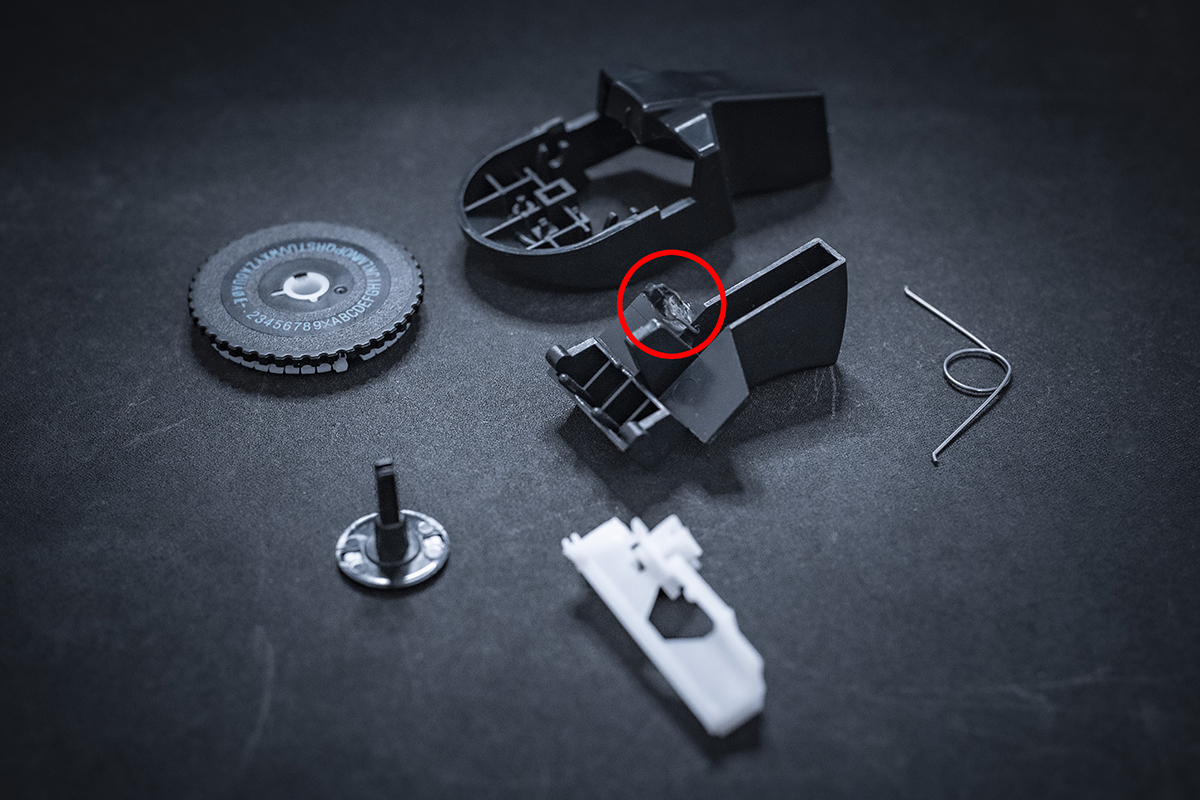🤓 about
By combining simple and widely available embossing tapes in a reliable mechanism with modern connectivity, E-TKT rescues a would-be future that did not happen, and at the same time reduces the dependence on environmentally impacting DRM-enabled disposable cartridges.
🧐 what?
étiquette f (plural étiquettes)
“ticket, memorandum, attach, stick, pierce, sting, to be sharp, goad, puncture, attach, nail”
- tag, label
- prescribed behavior
It’s curious how both meanings are a consequence of each other: we name things around to state and reinforce what they are or should be, and at the same time, we end up influencing our own behaviors mediated by these labels.
🤔 why?
TLDR: curiosity, technical challenge and of course organizing stuff.

The initial spark for this project came from an ordinary manual labeling device that I bought to organize my workshop. I was VERY UPSET when I noticed that it was basically rubbish, getting broken and unusable after just a few operations. Just to imagine something made in another part of the world, travelling to me and breaking this way is unbelieavable.
Instead of embossing, it was really embarrassing labels 😅
This little plastic hook (circled in red) grabs a ratchet mechanism (the white plastic part below) to feed the tape forward. I tried to fix and reinforce it, but the failure was unavoidable because there seems to be a critical flaw in the project: it is too weak for the lateral force imposed.

At that moment, I could easily buy a brand-new electronic thermal label printer (such as this Brother model), but something about the vintage embossed finish fascinated me. Also, these new models use expensive DRM proprietary cartridges that create a lot of trash after use, not to mention that some other recent models are DRM protected.
After all, even though the pressing mechanism was poorly made, the daisy wheel was pretty sturdy and sharp-printing. So I thought: can I build over its principles to create a functional device? If so, then why not make it physical-digital?
…why bother mixing an archaic printing method with current automation and connectivity features? Because why not? It was a technological blind spot ready to be explored!
🤯 reasoning
context & purpose
- CULTURE: embossed labels are deeply ingrained in culture, as well pointed by Dan Maloney (HACKADAY) and a spacestationkru (reddit) and agent_kater (reddit);
- NICHE NEEDS: there are situations where a paper, flat and/or thermally printed label doesn’t fit the needs, let alone the need for the embossed relief;
- ERGONOMICS: when there is no other way than using embossed labels, making them manually is a straining process that might give the operator repetitive strain injury;
- REACH: this is a cheap mass-produced device, meaning that lots of people around the world might have one at home or work;
- ENVIRONMENT: these devices might be already broken: how many kilos of wasted plastic (plus the shipping impact)?
- ISSUES: of course, these folks will be upset and in the end have their needs unaddressed;
- ACCESSIBILITY: braille labels are only a step of distance for a possible future spin off.
These factors made me think of E-TKT as more than a solution only for myself, but to everyone.
I wanted to create an open source project for a long time and this is why I put a lot of effort into testing all parts extensively and of course crafting this detailed documentation.
🤓 exploration
…anachronism
During the process I’ve realized that this odd mix between new and old was the biggest underlying curiosity. According to Wikipedia:
“An anachronism (from the Greek ἀνά ana, ‘against’ and χρόνος khronos, ‘time’) is a chronological inconsistency in some arrangements, especially a juxtaposition of people, events, objects, language terms and customs from different time periods”.
The point is: even though the process is digitalized, the resulting label is totally old school and there is no easy way of telling if it wasn’t made in the traditional way.